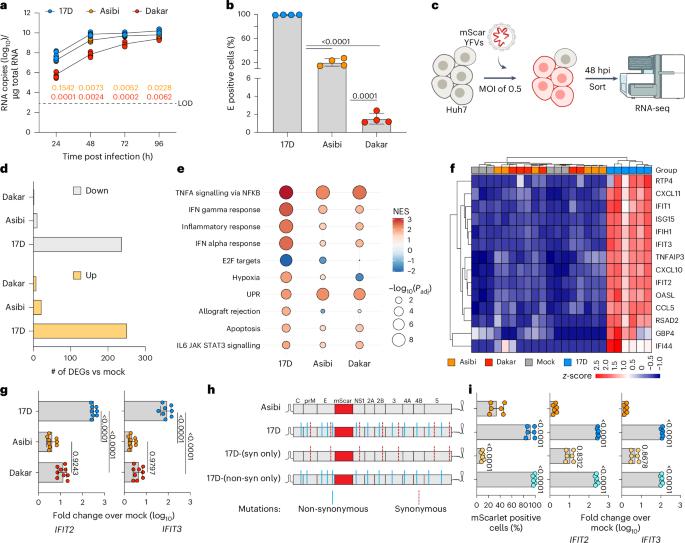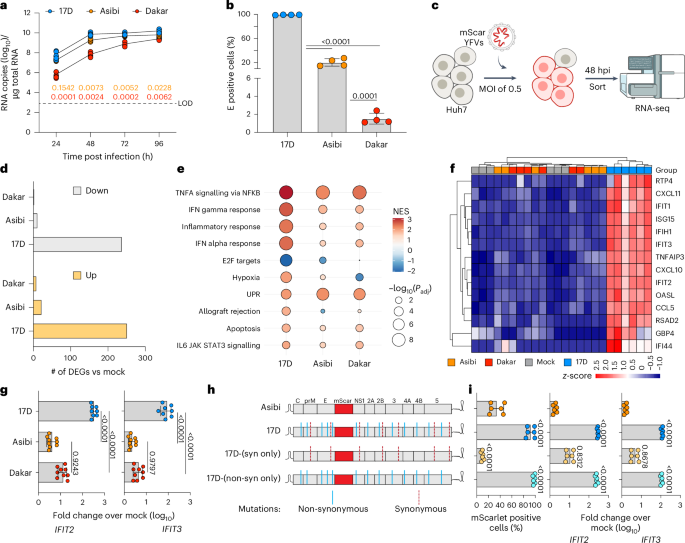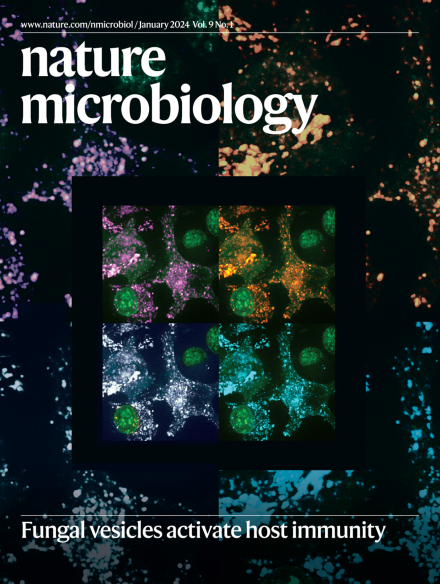两种病毒蛋白的氨基酸变化驱动黄热病17D疫苗的衰减
IF 19.4
1区 生物学
Q1 MICROBIOLOGY
引用次数: 0
摘要
黄热病17D减毒活疫苗株在遗传上与其毒力强的亲本株差别极小。然而,目前尚不清楚哪些序列差异导致毒性或衰减。在这里,我们使用SHAPE-MaP证明,这些突变不会诱导全局RNA结构的变化,并表明蛋白质序列突变是17D和毒力YFV之间表型差异的主要原因。使用高度模块化的组合遗传方法,我们确定了包膜(E)和非结构2A (NS2A)蛋白中的关键突变,这些突变增加了17D的传播能力并增强了宿主抗病毒反应。在体外和两种小鼠模型中,将这些突变引入毒性YFV基因组的感染性克隆可导致病毒衰减。总的来说,我们的研究结果确定了17D衰减的遗传基础,并强调了通过在其他致病性病毒中引入导致类似表型变化的突变来制造减毒活疫苗的潜在通用方法。本文章由计算机程序翻译,如有差异,请以英文原文为准。


Amino acid changes in two viral proteins drive attenuation of the yellow fever 17D vaccine
The live-attenuated yellow fever 17D vaccine strain differs genetically only minimally from its virulent parent. However, it remains unclear which sequence differences lead to virulence or attenuation. Here we demonstrate, using SHAPE-MaP, that these mutations do not induce global RNA structure changes and show that protein sequence mutations are mostly responsible for the phenotypic differences between 17D and virulent YFV. Using a highly modular, combinatorial genetic approach, we identified key mutations in the envelope (E) and non-structural 2A (NS2A) proteins that increase 17D’s ability to spread and enhance host antiviral responses. Introducing these mutations into infectious clones of virulent YFV genomes results in viral attenuation in vitro and in two mouse models. Collectively, our results define the genetic basis for 17D attenuation and highlight a potentially general approach for creating live-attenuated vaccines by introducing mutations resulting in similar phenotypic changes in other pathogenic viruses. Amino acid changes in the envelope and non-structural 2A protein attenuate the virulent yellow fever virus (YFV) and enhance host antiviral responses upon infection in vivo. These traits explain the potency of the YFV vaccine.
求助全文
通过发布文献求助,成功后即可免费获取论文全文。
去求助
来源期刊

Nature Microbiology
Immunology and Microbiology-Microbiology
CiteScore
44.40
自引率
1.10%
发文量
226
期刊介绍:
Nature Microbiology aims to cover a comprehensive range of topics related to microorganisms. This includes:
Evolution: The journal is interested in exploring the evolutionary aspects of microorganisms. This may include research on their genetic diversity, adaptation, and speciation over time.
Physiology and cell biology: Nature Microbiology seeks to understand the functions and characteristics of microorganisms at the cellular and physiological levels. This may involve studying their metabolism, growth patterns, and cellular processes.
Interactions: The journal focuses on the interactions microorganisms have with each other, as well as their interactions with hosts or the environment. This encompasses investigations into microbial communities, symbiotic relationships, and microbial responses to different environments.
Societal significance: Nature Microbiology recognizes the societal impact of microorganisms and welcomes studies that explore their practical applications. This may include research on microbial diseases, biotechnology, or environmental remediation.
In summary, Nature Microbiology is interested in research related to the evolution, physiology and cell biology of microorganisms, their interactions, and their societal relevance.
 求助内容:
求助内容: 应助结果提醒方式:
应助结果提醒方式:


